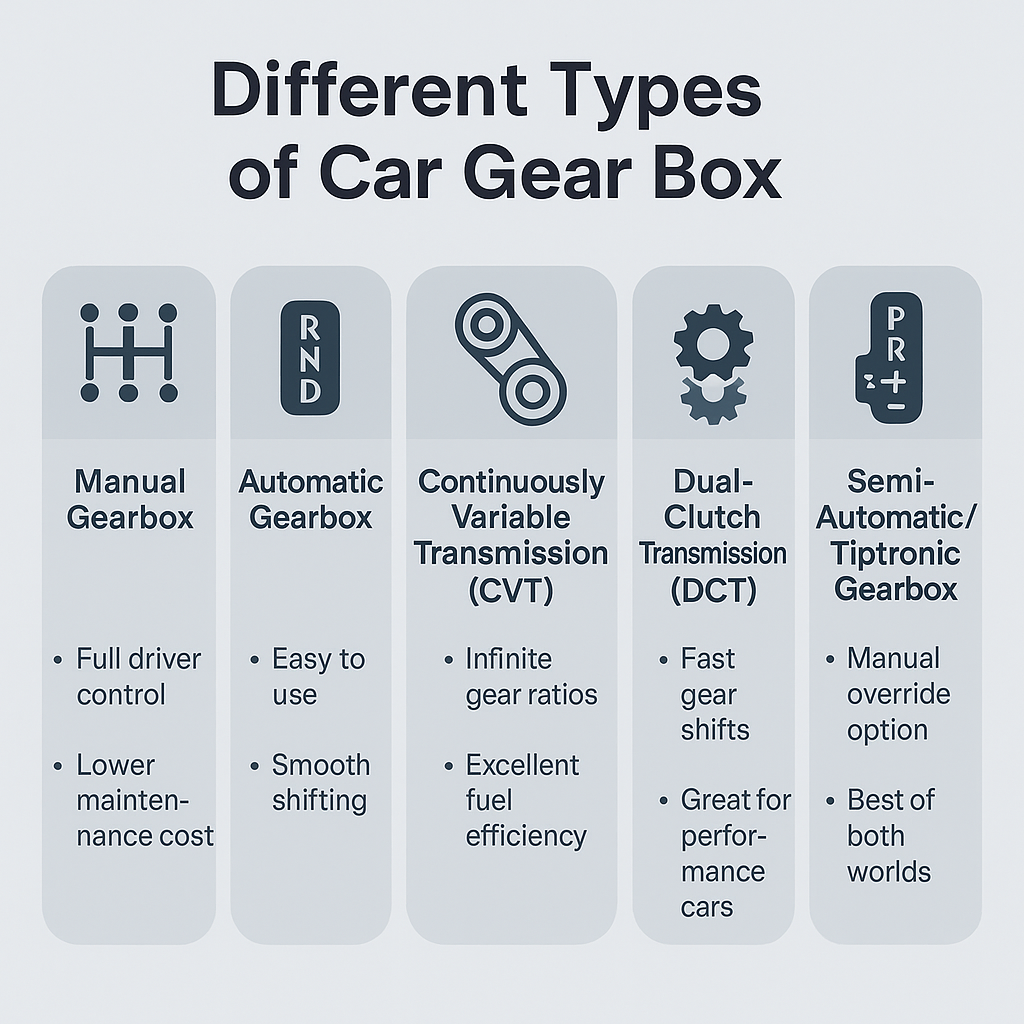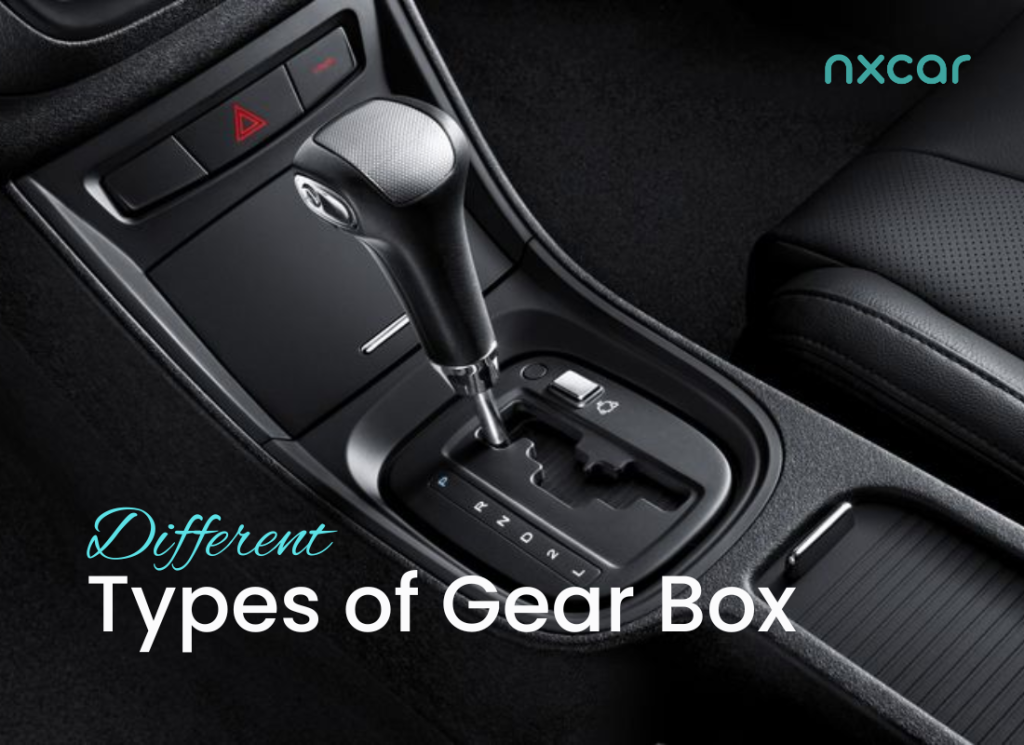The smooth hum of an engine is deceptive. Beneath that calming sound lies a complex mechanical ballet — a system that, if not perfectly synchronized, can turn any drive into a nightmare. Few drivers ever ponder the marvel nestled under the hood: the car gearbox. But when gears slip, grind, or refuse to engage, frustration sets in like an unwelcome passenger.
Every press of the accelerator demands precise power delivery. But without an efficient car gearbox, even the most powerful engine is nothing more than a growling beast on a leash. The problem? Many drivers remain oblivious to the vital role this unsung hero plays — until it malfunctions. Sudden jerks, delayed acceleration, or the dreaded burning smell of overheated transmission fluid can transform a routine drive into an expensive repair saga.
The aggravation doesn’t end there. With so many different types of gear box available — manual, automatic, continuously variable, dual-clutch — confusion often paralyzes car owners when it’s time to choose or maintain one. Each system offers unique advantages, but the jargon-filled explanations leave many scratching their heads.
But relief is closer than it seems. Understanding the intricate world of the car gearbox empowers drivers to make informed decisions, prolong vehicle lifespan, and experience smoother, more efficient rides. Let’s dive beneath the surface and unravel the fascinating mechanics that keep our wheels turning flawlessly.
What is a car gearbox?
At the heart of every vehicle’s motion lies an engineering marvel: the car gearbox. This intricate assembly of gears, shafts, and synchronizers orchestrates the delicate dance between engine power and wheel rotation. Without it, the engine’s raw force would be erratic, uncontrollable, and inefficient for practical driving.
The primary function of a car gearbox is to regulate torque and speed. As the engine produces rotational force, the gearbox adjusts this energy, ensuring optimal performance whether cruising on highways or crawling through traffic. By modifying gear ratios, it allows vehicles to accelerate smoothly, climb steep gradients, and conserve fuel at higher speeds.
Beneath the surface, a complex interplay unfolds. Precision-cut gears engage and disengage, meshing seamlessly to transfer power without disruption. This seamless engagement is what gives drivers that silky-smooth transition between speeds, whether in city traffic or open roads.
There are different types of gear box systems available, each with its distinct advantages and quirks. Manual gearboxes offer direct driver engagement and control, while automatic variants handle shifts autonomously, catering to convenience and ease. Continuously variable transmissions (CVTs) deliver an almost infinite range of gear ratios, maximizing efficiency. Dual-clutch systems combine rapid shifting with performance precision, appealing to driving enthusiasts.
In essence, the car gearbox is not just a component — it’s the silent conductor of a vehicle’s symphony, ensuring every journey is smooth, efficient, and responsive.
Recommended – Will Hybrid Cars Outsell Electric Vehicles in the Coming Years?
Parts of a Car Gearbox
Inside the car gearbox, an intricate network of precision-engineered components works in unison to transmit power efficiently. Each part plays a vital role in transforming the engine’s raw energy into controlled, usable force.
Key Components Include:
-
Gears: The heart of the system. These toothed wheels of varying sizes determine the torque and speed delivered to the wheels. Their configuration changes depending on the different types of gear box being used.
-
Shafts: Acting as support and conduits, shafts hold the gears in place. The input shaft receives power from the engine, while the output shaft delivers it to the wheels.
-
Synchronizers: These allow smooth engagement of gears, minimizing grinding and ensuring seamless transitions between speeds.
-
Clutch (in manual gearboxes): Responsible for disconnecting the engine from the gearbox temporarily, allowing gear changes without damaging the components.
-
Bearings and Bushings: These reduce friction, ensuring smooth rotation of the gears and shafts while prolonging component life.
-
Casing: The protective shell that houses all internal components, shielding them from debris, contaminants, and external damage.
Whether dealing with manual, automatic, or the many different types of gear box configurations, these parts collectively ensure every journey is both powerful and controlled.
Different Types of Gearboxes in Cars

Modern vehicles are equipped with a variety of different types of gear box systems, each tailored to distinct driving preferences and performance demands. Understanding these variations reveals the engineering brilliance beneath the hood.
Manual Gearbox:
Among the different types of gear box, the manual gearbox remains a timeless favorite for driving enthusiasts. It grants full command over gear selection, using a clutch pedal and gear lever to engage or disengage gears. Each shift demands precision and timing, turning every drive into an interactive experience. The manual system excels in delivering immediate power, superior fuel economy, and minimal mechanical complexity. Its straightforward design often translates to lower maintenance costs. While modern automatics dominate city roads, the manual gearbox still holds its ground, cherished for the pure, unfiltered connection it offers between driver and machine.
Automatic Gearbox:
Among the different types of gear box, the automatic gearbox epitomizes effortless driving. It autonomously selects the optimal gear ratio based on speed, engine load, and throttle input. No clutch pedal. No manual shifting. Just seamless acceleration and deceleration. Utilizing a torque converter or advanced planetary gear systems, it delivers smooth transitions between gears, ideal for stop-and-go urban traffic. Modern automatic transmissions often include adaptive learning, adjusting to individual driving styles for enhanced performance. While traditionally less fuel-efficient than manuals, technological advancements have significantly narrowed the gap, making automatics a popular choice for comfort and convenience worldwide.
- Continuously Variable Transmission (CVT):
A marvel of modern engineering. Instead of fixed gears, CVTs use a belt and pulley system to provide infinite gear ratios. This ensures optimal engine performance and exceptional fuel efficiency. - Dual-Clutch Transmission (DCT):
Blending performance with efficiency. It employs two clutches to pre-select gears, allowing lightning-fast shifts without interrupting power flow. Popular in performance and luxury vehicles. - Tiptronic and Semi-Automatic Gearbox:
A hybrid approach. Allows drivers to switch between automatic and manual-like control, combining the best of both worlds.
These different types of gear box systems cater to diverse driving needs, ensuring every journey is as smooth or as thrilling as desired.
Recommended – 23 Automatic Paddle Shift Used Cars in India You’ll Love to Drive
Functions of the Car Gearbox
The car gearbox is far more than a simple collection of gears and levers. It serves as the critical intermediary between the engine and the wheels, ensuring power is delivered efficiently and precisely. Without it, driving would be chaotic, inefficient, and nearly impossible.
Regulates Engine Speed
Engines operate optimally within a narrow range of revolutions per minute (RPM). The gearbox adjusts the engine’s output, allowing the vehicle to accelerate or decelerate while keeping the engine within its ideal RPM range.
Converts Torque
-
In low gears, the gearbox multiplies torque, enabling the car to start moving from a standstill or climb steep inclines.
-
In higher gears, it reduces torque, allowing for higher speeds with lower fuel consumption.
Provides Directional Control
Some gearboxes, particularly in the different types of gear box designs, include reverse gears, enabling backward motion safely and effectively.
Enhances Fuel Efficiency
By optimizing gear ratios, the gearbox minimizes unnecessary fuel consumption, ensuring the engine runs as efficiently as possible under varying conditions.
Smooth Driving Experience
-
Synchronizers within the gearbox ensure seamless gear transitions.
-
Modern systems adjust to driving style and terrain, delivering smooth, uninterrupted power flow.
Across the different types of gear box—manual, automatic, CVT, or dual-clutch—these functions work together to create a controlled, responsive, and enjoyable driving experience.
How Does a Gearbox Work?
The car gearbox transforms raw engine power into controlled movement. Its intricate design ensures that the vehicle can operate efficiently across a variety of speeds and terrains.
Power Transmission
The engine generates rotational force, or torque, which enters the gearbox through the input shaft. The gearbox then adjusts this torque, distributing it appropriately to the wheels through the output shaft.
Gear Ratios and Speed Control
-
Lower gears multiply torque, providing greater pulling power for acceleration or climbing.
-
Higher gears reduce torque but allow for increased speed with lower engine strain.
-
This balance preserves engine health and optimizes fuel efficiency.
Synchronization
Inside the gearbox, synchronizers align the speeds of the gears and shafts before engagement. This prevents the dreaded grinding noise and allows for seamless shifting, especially crucial in manual transmissions.
Gear Engagement
-
Manual systems rely on driver input to engage different gears.
-
Automatic systems use hydraulic pressure, sensors, and control units to select gears without driver intervention.
-
Among the different types of gear box, some utilize dual clutches or continuously variable mechanisms for rapid or infinitely adjustable gear changes.
Direction Control
Reverse gears allow the vehicle to move backward safely, utilizing specialized gear arrangements to reverse the direction of power flow.
Each of the different types of gear box systems operates on these foundational principles, though with unique mechanisms and technologies tailored to specific driving needs.
Advantages and Disadvantages of Manual Gearbox
The manual gearbox, one of the oldest among the different types of gear box, continues to attract driving enthusiasts and practical motorists alike. Its mechanical simplicity offers unique benefits, but it also comes with its own set of compromises.
Advantages
1. Enhanced Control:
Drivers have full command over gear selection, allowing precise control over speed, torque, and engine braking. This is particularly advantageous on winding roads, steep inclines, or challenging weather conditions.
2. Fuel Efficiency:
Manual transmissions generally consume less fuel, especially when operated skillfully. The direct connection between engine and wheels minimizes energy loss.
3. Lower Maintenance Costs:
With fewer complex components—no torque converters or advanced hydraulic systems—manual gearboxes typically cost less to maintain and repair over time.
4. Durability:
A well-maintained manual gearbox can often outlast many automatic systems, making it a long-term investment for some drivers.
5. Purchase Price:
Vehicles equipped with manual transmissions often carry a lower initial price tag, making them an economical choice upfront.
Disadvantages
1. Steeper Learning Curve:
Mastering clutch control and gear shifts requires practice. New drivers may find it intimidating and stressful, especially in heavy traffic.
2. Driver Fatigue:
Frequent gear changes, particularly in stop-and-go traffic, can lead to physical fatigue and frustration during long commutes.
3. Limited Availability:
Many modern vehicles, especially in certain markets, are phasing out manual options in favor of automatics and other different types of gear box systems.
4. Resale Challenges:
Manual transmissions may have a smaller pool of interested buyers, potentially affecting resale value.
While the manual gearbox holds a special place among the different types of gear box, its suitability largely depends on personal preference, driving conditions, and skill level.
Advantages and Disadvantages of Automatic Gearbox
The automatic gearbox, one of the most widely adopted among the different types of gear box, offers unmatched convenience and adaptability. Its advanced engineering delivers a driving experience that caters to modern lifestyles, but it also presents a few compromises that buyers should consider.
Advantages
1. Ease of Use:
Automatic transmissions eliminate the need for manual gear changes and clutch control. This simplicity allows drivers to focus solely on steering and navigation, reducing stress, especially in congested traffic.
2. Smooth Driving Experience:
Advanced hydraulic systems, torque converters, and electronic controls enable seamless gear transitions. Passengers enjoy a smooth, uninterrupted ride even during rapid acceleration or deceleration.
3. Accessibility:
Automatic gearboxes make driving more accessible to a wider range of people, including beginners, elderly drivers, and those with physical limitations.
4. Modern Features:
Many automatics integrate cutting-edge technology like adaptive shift logic, sport modes, and fuel-saving algorithms that continuously optimize gear changes for performance and efficiency.
5. Reduced Driver Fatigue:
Without the constant need for gear shifting, long-distance driving becomes far less tiring, especially during stop-and-go urban commutes.
Disadvantages
1. Higher Cost:
Vehicles equipped with automatic transmissions generally carry a higher initial purchase price compared to manuals.
2. Increased Maintenance:
The complexity of automatic systems—hydraulic circuits, sensors, and electronic modules—can result in higher repair and maintenance costs over time.
3. Lower Fuel Efficiency (in some models):
Although modern advancements have closed the gap, some automatic transmissions still consume more fuel than manual counterparts, particularly in older models.
4. Less Driver Engagement:
For driving enthusiasts, the absence of direct control can diminish the sense of connection and involvement with the vehicle.
Despite these trade-offs, automatic gearboxes remain a popular choice among the different types of gear box, thanks to their convenience, comfort, and increasingly sophisticated technology.
Conclusion
The car gearbox stands as a masterpiece of engineering, quietly managing the complex interplay between engine power and wheel performance. With so many different types of gear box available — from manual precision to automatic convenience — drivers have more choices than ever to suit their preferences and driving conditions. Each system carries unique strengths and compromises, but all share the same essential purpose: delivering a smooth, efficient, and responsive driving experience. As automotive technology evolves, these gearboxes continue to adapt, ensuring that every journey remains both powerful and enjoyable.




